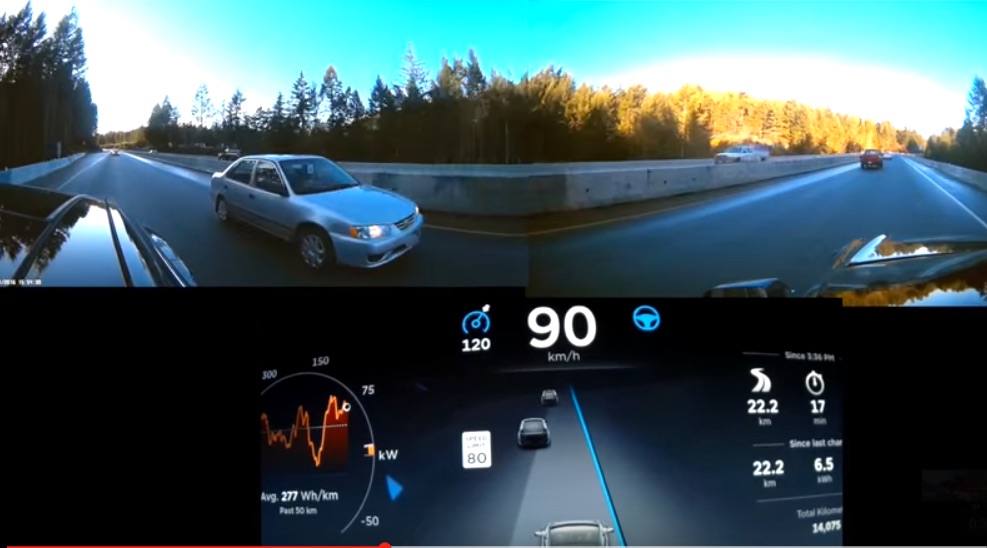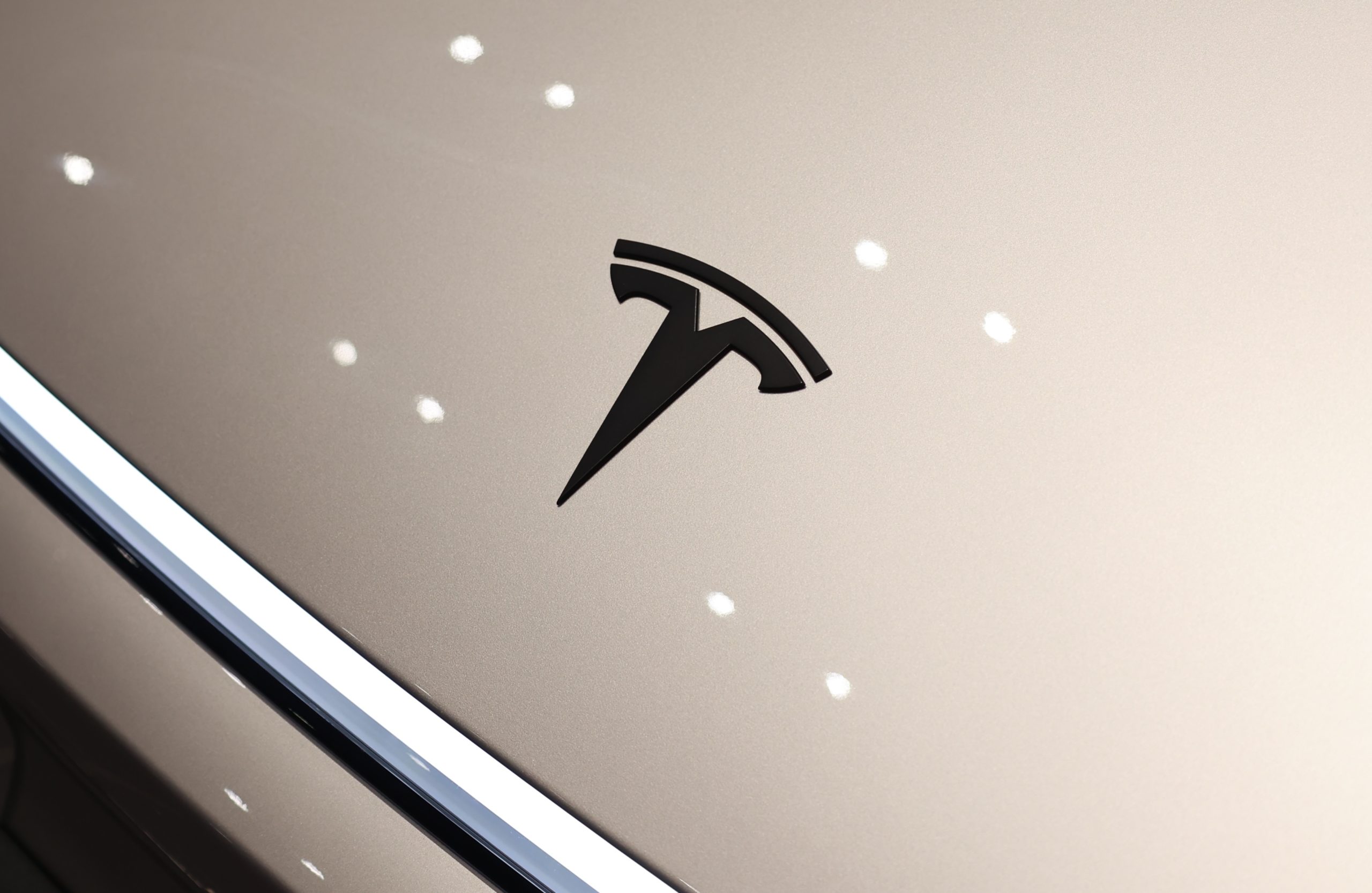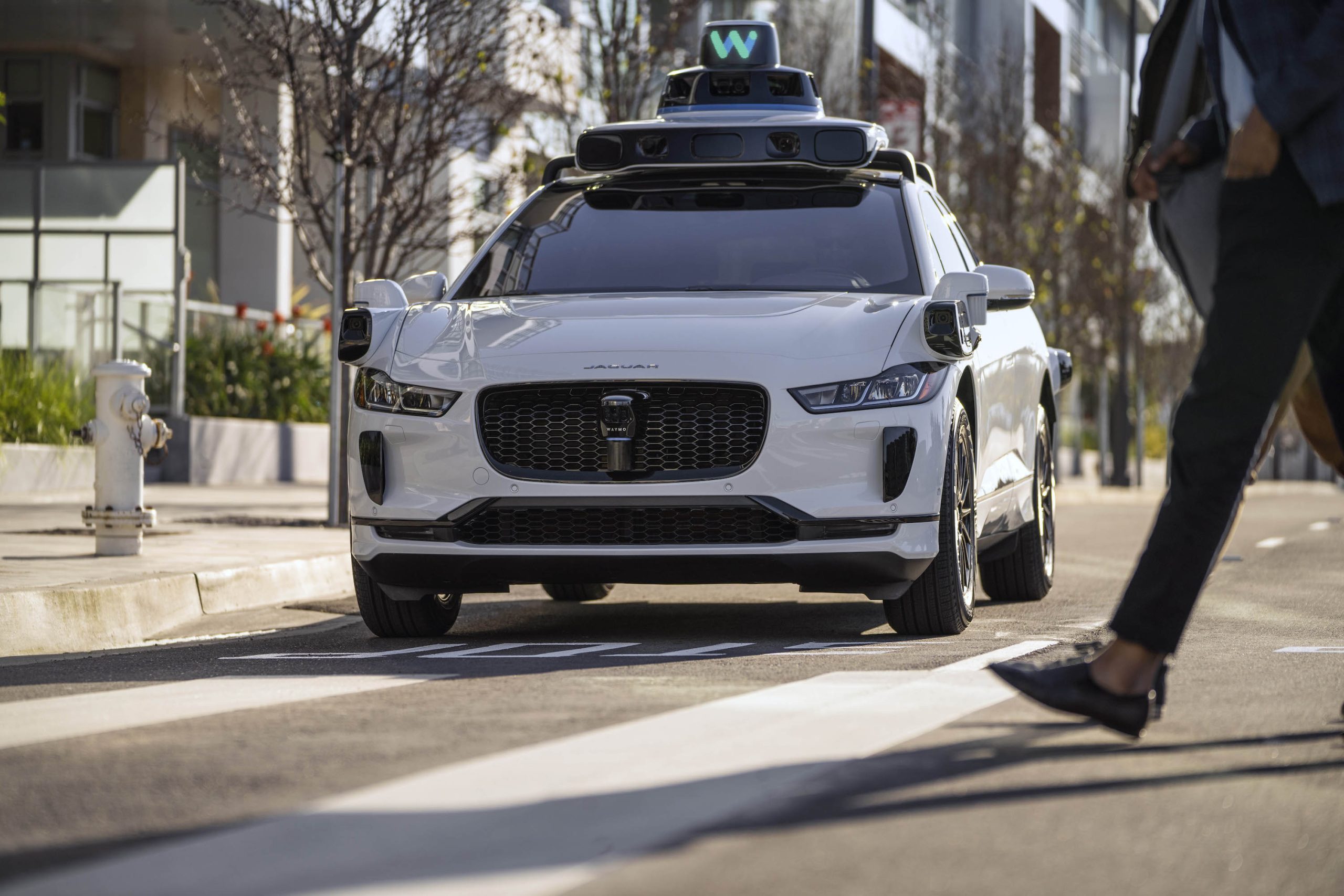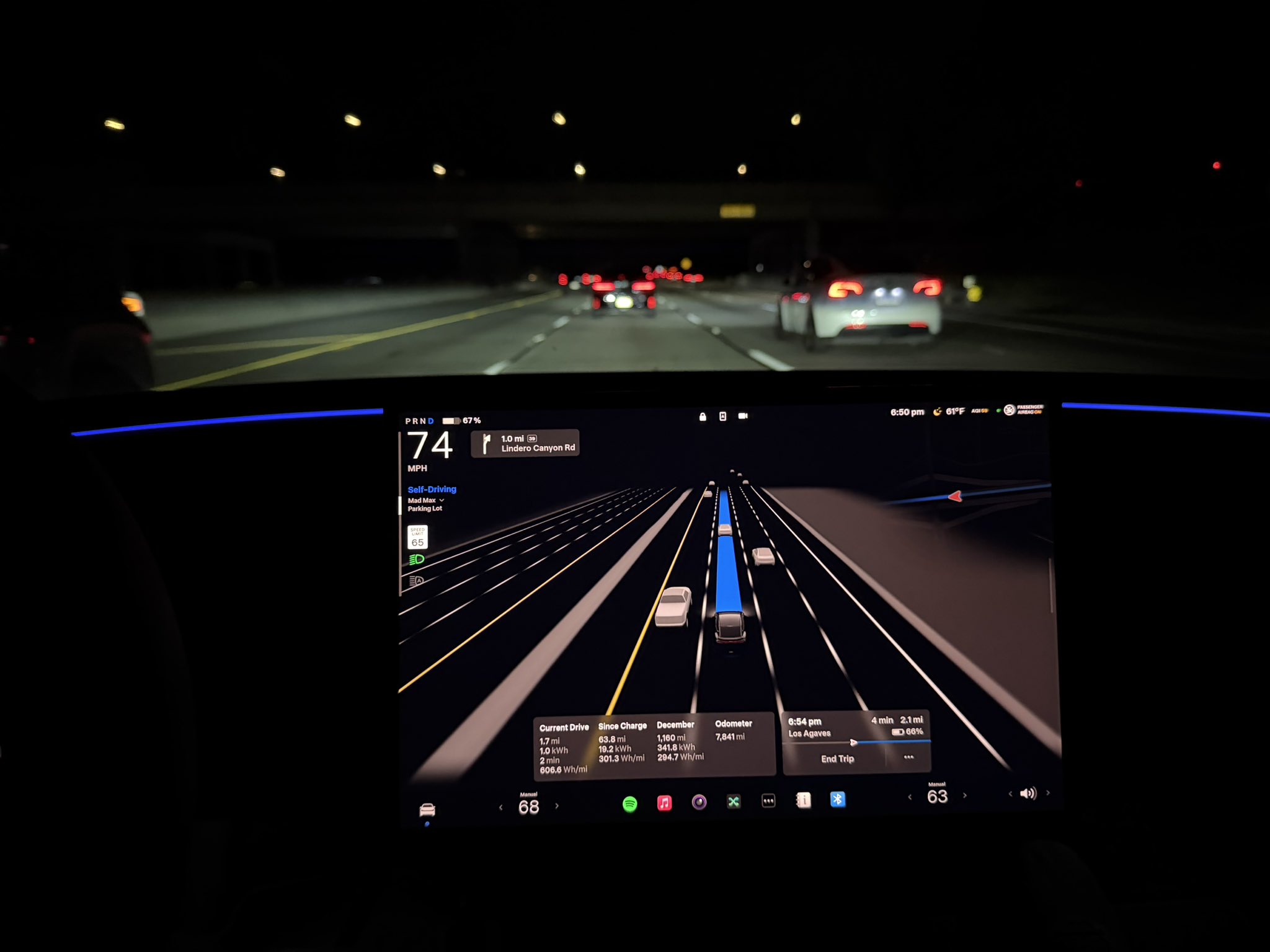News
Tesla defends its right to release individual driver data to disprove claims

During a week in which the House of Representatives voted to repeal Obama era Internet privacy protections, Tesla has come under fire from owners who dispute the all-electric carmaker’s right to disclose individual driver data to the media while also failing to share that data with the drivers themselves.
A pattern of Tesla public data dissemination has occurred after accidents in which Tesla vehicles have had automation software engaged. Tesla vehemently stands behind the safety and reliability of its cars, citing how its “Autopilot has been shown to save lives and reduce accident rates.” That comment came as result of a request from The Guardian. In explanation as to why Tesla releases individual driver information to the media, the Tesla spokesperson added, “We believe it is important that the public have a factual understanding of our technology.”
It is important to note that, in a famous case in which a Tesla Model S was the subject of serious scrutiny following a driver’s death after colliding with a truck while the driver-assist feature was engaged, the U.S. National Highway Traffic Safety Administration issued a report of no fault on Tesla’s part. Indeed the report stated that “Tesla vehicles crash rate dropped by almost 40 percent after Autosteer installation.”
What’s being contested here then? Several things, actually. Tesla feels it has an explicit corporate need to stand behind its driving-assist Autopilot technology through public disclosures of individual driving data when a crash occurs. Individual Tesla drivers, on the other hand, express a desire to maintain the right to information privacy regarding their driving performance. And, while Tesla has disseminated individual driver information to the media following Tesla crashes involving its Autopilot system, it continues to deny data sharing with individual customers. Moreover, the company does not follow the commonly accepted research practice of gaining permissions from study participants prior to including them in a data set.
And now some Tesla owners are fired up.
The technology available within a Tesla can provide information about the location of a driver’s hands on the steering wheel, if and when a driver’s door opens, and, importantly, the engagement and performance levels of autonomous technology. Tesla insists that it only releases specific driver data to the media when information has been misrepresented to the public.
Tesla crashes always seem to catch media attention. After a fatal early morning Tesla Model S crash in Indianapolis, a distraught dad claimed that his daughter would still be alive if she had been driving any other car but a Tesla. In a Baarn, Netherlands accident in which a Tesla Model S collided at high speed with a tree and killed the driver, Tesla investigated alongside local authorities. Uncertain as to whether Tesla’s Autopilot feature was engaged, the company said at the time it would analyze data collected through vehicle recovery procedures and “ share it with the public” once reports became final. In 2016, the first crash in China involving a Tesla operating in Autopilot mode caused a great deal of consternation. And a driver of a Model X that crashed along a trek to Yellowstone in Montana posted an open letter to Elon Musk and Tesla, asking the company to “take responsibility for the mistakes of Tesla products” and accusing Tesla of using drivers as “lab rats” for testing of its Autopilot system.
It is that dehumanization of Tesla drivers which has suddenly come to the forefront. Yes, as in all vehicular incidents, various factors come into play, especially driver error: physical (tired), emotional (angry), psychological (confused), or intellectual (distracted) factors occur when a person gets behind the wheel. But that’s not what is at issue in the case of drivers’ rights to information privacy when they engage technology applications. Is driving a personal act, a type of agency for which the driver assumes all responsibility? And, if all research institutions are required to acquire ethical consent from participants, why is Tesla absolved of such responsibility? The answers to these questions will continue to evolve as technology advances at amazing speeds.
In the upcoming age of self-driving cars, every touch screen signal is transmitted to the cloud as an immediate extension of a car’s functionality. A year ago, at a Congressional hearing about driverless cars, Massachusetts Senator Ed Markey questioned over and over whether driverless car manufacturers would assume a minimum standard for consumer privacy protection. None of the constituents present answered his question.
And now, with the U.S. Congress clearly opposed to internet privacy protections, will the public — Tesla drivers included — give up the fight? Will it be “the classic politics of resignation,” as Lawrence Lessig, a Harvard law professor, asserts? He says, “Most people… pick fights they know they can convince people they can win.” It’s an era in which the U.S. Presidential transition team members, according to Politico, had to sign non-disclosure agreement to make certain they keep all of their work confidential. Tesla, too, likes to keep internal information quiet, yet California lawmakers sent a letter to Tesla in January, 2017 asking the company to loosen its employee confidentiality agreement.
Major institutions want their information kept inside closed doors. Can drivers claim the right to privacy of what will become ubiquitous self-driving technology information systems of the future?
A Tesla spokesperson says the following in regards to the release of individual driver data:
“In unusual cases in which claims have already been made publicly about our vehicles by customers, authorities or other individuals, we have released information based on the data to either corroborate or disprove these claims. The privacy of our customers is extremely important and something we take very seriously, and in such cases, Tesla discloses only the minimum amount of information necessary… [We] transfer and disclose information, including personal and non-personally identifiable information … to protect the rights, property, safety, or security of the Services, Tesla, third parties, visitors to our Services, or the public, as determined by us in our sole discretion.”

News
Tesla (TSLA) receives “Buy” rating and $551 PT from Canaccord Genuity
He also maintained a “Buy” rating for TSLA stock over the company’s improving long-term outlook, which is driven by autonomy and robotics.

Canaccord Genuity analyst George Gianarikas raised his Tesla (NASDAQ:TSLA) price target from $482 to $551. He also maintained a “Buy” rating for TSLA stock over the company’s improving long-term outlook, which is driven by autonomy and robotics.
The analyst’s updated note
Gianarikas lowered his 4Q25 delivery estimates but pointed to several positive factors in the Tesla story. He noted that EV adoption in emerging markets is gaining pace, and progress in FSD and the Robotaxi rollout in 2026 represent major upside drivers. Further progress in the Optimus program next year could also add more momentum for the electric vehicle maker.
“Overall, yes, 4Q25 delivery expectations are being revised lower. However, the reset in the US EV market is laying the groundwork for a more durable and attractive long-term demand environment.
“At the same time, EV penetration in emerging markets is accelerating, reinforcing Tesla’s potential multi‑year growth runway beyond the US. Global progress in FSD and the anticipated rollout of a larger robotaxi fleet in 2026 are increasingly important components of the Tesla equity story and could provide sentiment tailwinds,” the analyst wrote.
Tesla’s busy 2026
The upcoming year would be a busy one for Tesla, considering the company’s plans and targets. The autonomous two-seat Cybercab has been confirmed to start production sometime in Q2 2026, as per Elon Musk during the 2025 Annual Shareholder Meeting.
Apart from this, Tesla is also expected to unveil the next-generation Roadster on April 1, 2026. Tesla is also expected to start high-volume production of the Tesla Semi in Nevada next year.
Apart from vehicle launches, Tesla has expressed its intentions to significantly ramp the rollout of FSD to several regions worldwide, such as Europe. Plans are also underway to launch more Robotaxi networks in several more key areas across the United States.
News
Waymo sues Santa Monica over order to halt overnight charging sessions
In its complaint, Waymo argued that its self-driving cars’ operations do not constitute a public nuisance, and compliance with the city’s order would cause the company irreparable harm.

Waymo has filed a lawsuit against the City of Santa Monica in Los Angeles County Superior Court, seeking to block an order that requires the company to cease overnight charging at two facilities.
In its complaint, Waymo argued that its self-driving cars’ operations do not constitute a public nuisance, and compliance with the city’s order would cause the company irreparable harm.
Nuisance claims
As noted in a report from the Los Angeles Times, Waymo’s two charging sites at Euclid Street and Broadway have operated for about a year, supporting the company’s growing fleet with round-the-clock activity. Unfortunately, this has also resulted in residents in the area reportedly being unable to sleep due to incessant beeping from self-driving taxis that are moving in and out of the charging stations around the clock.
Frustrated residents have protested against the Waymos by blocking the vehicles’ paths, placing cones, and “stacking” cars to create backups. This has also resulted in multiple calls to the police.
Last month, the city issued an order to Waymo and its charging partner, Voltera, to cease overnight operations at the charging locations, stating that the self-driving vehicles’ activities at night were a public nuisance. A December 15 meeting yielded no agreement on mitigations like software rerouting. Waymo proposed changes, but the city reportedly insisted that nothing would satisfy the irate residents.
“We are disappointed that the City has chosen an adversarial path over a collaborative one. The City’s position has been to insist that no actions taken or proposed by Waymo would satisfy the complaining neighbors and therefore must be deemed insufficient,” a Waymo spokesperson stated.
Waymo pushes back
In its legal complaint, Waymo stated that its “activities at the Broadway Facilities do not constitute a public nuisance.” The company also noted that it “faces imminent and irreparable harm to its operations, employees, and customers” from the city’s order. The suit also stated that the city was fully aware that the Voltera charging sites would be operating around the clock to support Waymo’s self-driving taxis.
The company highlighted over one million trips in Santa Monica since launch, with more than 50,000 rides starting or ending there in November alone. Waymo also criticized the city for adopting a contentious strategy against businesses.
“The City of Santa Monica’s recent actions are inconsistent with its stated goal of attracting investment. At a time when the City faces a serious fiscal crisis, officials are choosing to obstruct properly permitted investment rather than fostering a ‘ready for business’ environment,” Waymo stated.
News
Tesla FSD v14.2.2 is getting rave reviews from drivers
So far, early testers have reported buttery-smooth drives with confident performance, even at night or on twisty roads.

Tesla Full Self-Driving (Supervised) v14.2.2 is receiving positive reviews from owners, with several drivers praising the build’s lack of hesitation during lane changes and its smoother decision-making, among others.
The update, which started rolling out on Monday, also adds features like dynamic arrival pin adjustment. So far, early testers have reported buttery-smooth drives with confident performance, even at night or on twisty roads.
Owners highlight major improvements
Longtime Tesla owner and FSD user @BLKMDL3 shared a detailed 10-hour impression of FSD v14.2.2, noting that the system exhibited “zero lane change hesitation” and “extremely refined” lane choices. He praised Mad Max mode’s performance, stellar parking in locations including ticket dispensers, and impressive canyon runs even in dark conditions.
Fellow FSD user Dan Burkland reported an hour of FSD v14.2.2’s nighttime driving with “zero hesitations” and “buttery smooth” confidence reminiscent of Robotaxi rides in areas such as Austin, Texas. Veteran FSD user Whole Mars Catalog also demonstrated voice navigation via Grok, while Tesla owner Devin Olsen completed a nearly two-hour drive with FSD v14.2.2 in heavy traffic and rain with strong performance.
Closer to unsupervised
FSD has been receiving rave reviews, even from Tesla’s competitors. Xpeng CEO He Xiaopeng, for one, offered fresh praise for FSD v14.2 after visiting Silicon Valley. Following extended test drives of Tesla vehicles running the latest FSD software, He stated that the system has made major strides, reinforcing his view that Tesla’s approach to autonomy is indeed the proper path towards autonomy.
According to He, Tesla’s FSD has evolved from a smooth Level 2 advanced driver assistance system into what he described as a “near-Level 4” experience in terms of capabilities. While acknowledging that areas of improvement are still present, the Xpeng CEO stated that FSD’s current iteration significantly surpasses last year’s capabilities. He also reiterated his belief that Tesla’s strategy of using the same autonomous software and hardware architecture across private vehicles and robotaxis is the right long-term approach, as it would allow users to bypass intermediate autonomy stages and move closer to Level 4 functionality.








